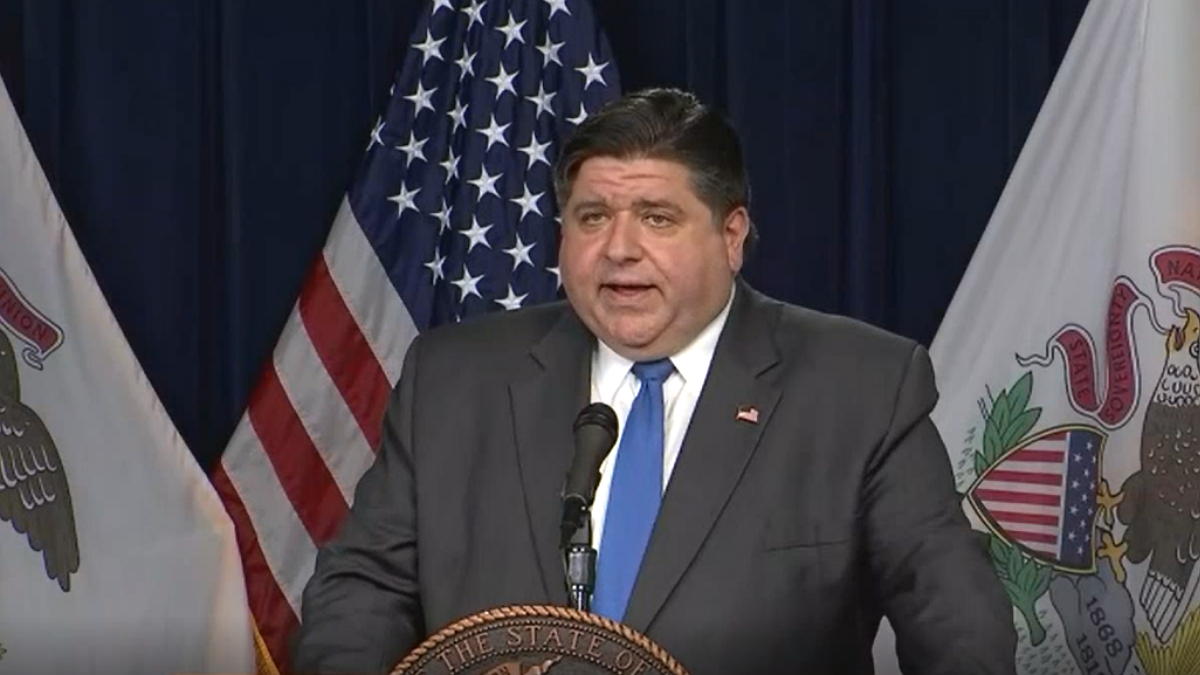Gov. J.B. Pritzker on Wednesday laid out a three-tiered plan that would reintroduce restrictions to a region in Illinois experiencing an increase in coronavirus cases.
The new plan features a gradual increase in "general and industry-specific mitigations that can be acted upon," should a region hit a certain set of metrics that raises alarm in the state.
“This plan ensures we are looking at all available data to make timely decisions to protect the health of our communities,” IDPH Director Dr. Ngozi Ezike said in a statement. “By assessing key metrics that indicate both the disease burden and the capacity of each COVID-19 region to respond, we can then take targeted actions within specific regions to help mitigate the spread of this deadly disease while keeping as much of our state open as possible.”
Some of the so-called mitigation strategies may include restrictions for indoor dining at bars and restaurants, which would be "automatically applied in a region that meets resurgence criteria."
Here's a look at the three tiers and what each will mean:
Tier 1:
Bars and restaurants: Reduce indoor dining capacity and suspend indoor bar service.
Hospitals: Reduce elective surgeries and procedures; limit visitation at hospitals; implement twice daily bed reporting.
Meetings, social events and religious gatherings: Additional limits on gatherings and room capacity.
Offices: Institute remote work for high risk individuals; continued emphasis on telework for as many workers as possible.
Organized group recreational activities & gyms (optional): Reduce indoor capacity.
Retail (optional): Reduce in-person capacity.
Salon and personal care (optional): Institute temporary location shutdown tied to outbreak.
Tier 2:
Bars and restaurants: Suspend indoor dining and bar service.
Hospitals: Suspend elective surgeries and procedures; implement surge capacity; assess need to open Alternate Care Facility.
Meetings, social events and religious gatherings: Greater limits on gatherings and room capacity.
Offices: Reduce office capacity with recommendations to resume remote work where possible.
Organized group recreational activities & gyms (optional): Suspend organized indoor recreational activities.
Retail (optional): Suspend in-person nonessential retail; online and curbside pick-up available for all.
Salon and personal care (optional): Institute temporary location shutdown tied to outbreak with possible broader mitigations.
Tier 3:
Bars and restaurants: Suspend in-person dining; takeout only.
Hospitals: Open Alternate Care Facility.
Meetings, social events and religious gatherings: Strictest limit to gatherings
and room capacity.
Offices: Institute remote work for all non-essential workers.
Organized group recreational activities & gyms (optional): Suspend organized indoor and outdoor recreational activities.
Retail (optional): Suspend all non-essential retail; only essential retail open (i.e. grocery stores, pharmacies).
Salon and personal care (optional): Suspend salon and personal care operations.
According to the governor's office, the following metrics will be used to determine "when the spread of the virus in a region requires additional mitigations":
- Sustained increase in 7-day rolling average (7 out of 10 days) in the positivity rate and one of the following severity indicators:
- Sustained 7-day increase in hospital admissions for a COVID-19 like illness
- Reduction in hospital capacity threatening surge capabilities (ICU capacity or medical/surgical beds < 20%)
- OR three consecutive days averaging ≥ 8% positivity rate
Still, Pritzker said Wednesday the state "is in its strongest position to combat the virus since the pandemic began."
“Illinois now has the lowest infection rates among all our neighboring states and one of the lowest positivity rates in the country – and it’s because of the individual actions of millions of our residents,” Pritzker said in a statement. “Opening up our economy does not have to come with a spike in cases. Other countries have done it successfully while reducing cases and infection rates. But that requires vigilance on the part of all of us. It’s imperative that individuals, families, workers and businesses follow the recommendations doctors have given about vital mitigations and that we act quickly if we see any outbreaks and upticks, signs that could lead to a surge of coronavirus infections.”
The announcement comes as Illinois reported more than 1,100 new cases of coronavirus on Wednesday, along with eight additional deaths.
According to data from the Illinois Department of Public Health, a total of 1,187 new cases were reported over the last 24 hours, bringing the statewide total of cases during the pandemic to 156,693.
Wednesday's death toll brings the number of fatalities related to COVID-19 to 7,226, according to health officials.
In all, 38,161 new specimens were returned to laboratories in the state, bringing the total to 2,079,601 since the pandemic began.
The rolling seven-day positivity rate sits at just over three percent, according to health officials.
Wednesday's briefing marked Pritzker's first coronavirus-specific news conference in more than two weeks, though he's answered questions about the pandemic at other events.
Most recently, when asked Tuesday if he's considering shutting down indoor dining and bars again, Pritzker said he "will not hesitate" to reimpose some restrictions meant to slow the spread of the coronavirus if certain metrics continue to rise.
"We're watching these numbers very, very closely. I don't wake up on any day and not look at those numbers first thing," Pritzker said. "We've been very measured about how we've reopened our state, and there are many people that complain that where we are now isn't open enough. And so I would just say that I will not hesitate to reimpose some mitigations if we see our numbers moving upward."



